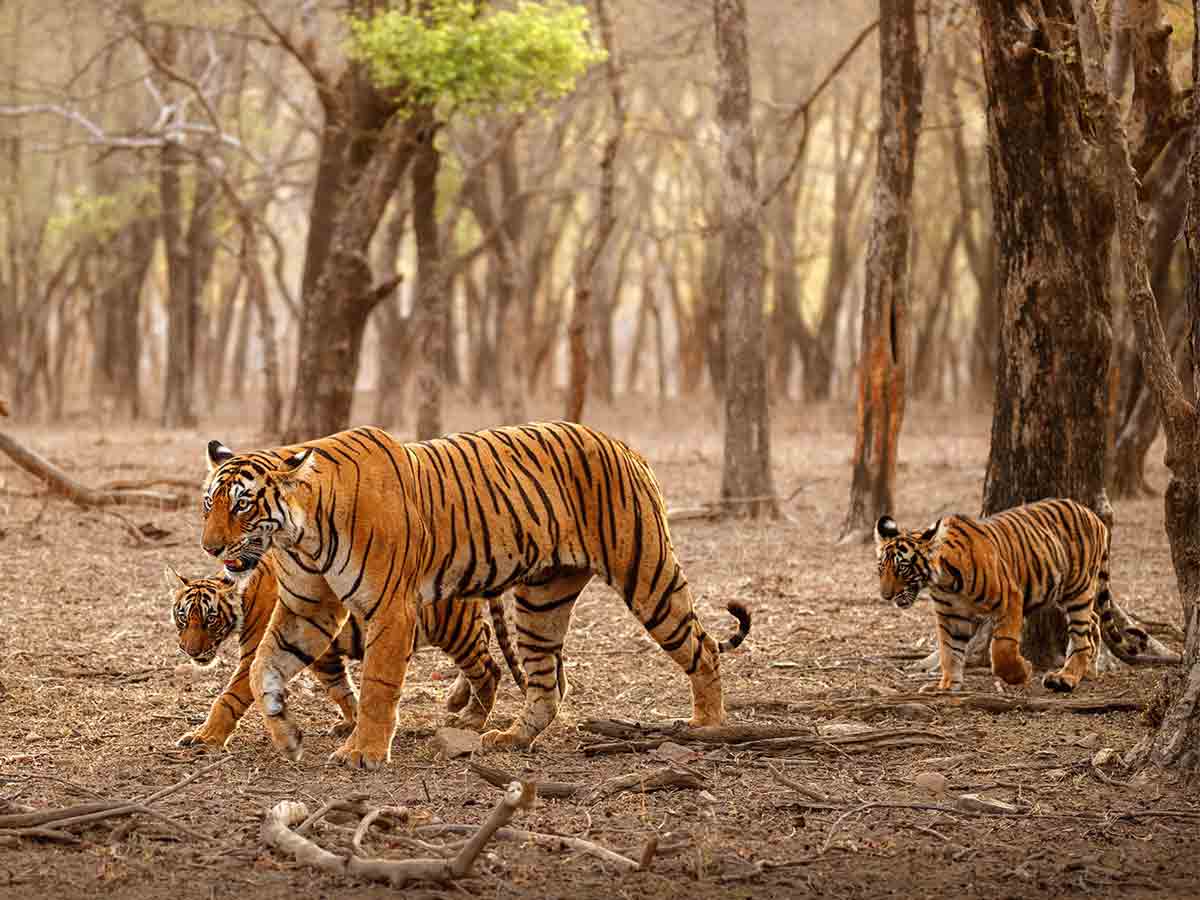The Bengal tiger is an elegant cat, maybe as well-known as any other kind of tiger on the planet. It is, however, both admired and endangered, valued by the same species that is eradicating it.
However, Bengal tigers have made a comeback in recent years. Although their numbers remain well below historical levels, they have become a remarkable bright spot for their endangered species. Here are a few lesser-known facts about the famed Bengal tiger in the hopes of throwing more light on these elusive cats and their struggle to coexist with us. The Bengal Tiger is India’s and Bangladesh’s national animal, and it can even be found in Bangladeshi currency. Bengal Tiger stripes are special to each person and function similarly to human fingerprints. The Bengal Tiger has the largest and strongest canine teeth of any living cat, measuring about 4 inches long. Its retractable claws and nails are suitable for tree climbing.
Where do you find Bengal Tigers?
Bengal Tigers are mostly found in subtropical and temperate upland forests in India. They can be found in Bangladesh in the Sundarbans mangrove area, where they are known to swim between islands. Bengal Tigers are the only tigers observed to survive in mangrove habitats. Their preferred habitat in Nepal is prime lowland forest. In Bhutan, they live in the subtropical Himalayan foothills and north temperate forests.

What do Bengal Tigers eat, and how do they find it?
These strong hunters are most active at dusk and dawn when they stalk prey and strike quietly using tall grass and trees. After capturing its prey, the Bengal Tiger drags or swims it to a safe location to eat it. Water buffalo, deer species, gaur, and wild boar are all common Bengal Tiger prey. They can eat up to 40kg in one sitting, but they don’t do it very often.
Also Read, Tiger Shroff’s Exercise Regime & Special Diet
What are the threats to Bengal Tigers?
Poaching and habitat destruction are the two most serious threats to the Bengal Tiger. The tigers that live in mangrove areas are also vulnerable to climate change as sea levels rise and change the structure of mangrove systems.
Wildlife crime is rampant, and well-organized poaching gangs exist to keep the illegal trade between India, Nepal, and China. Bengal Tiger body parts and bones are highly valued. It is difficult to stop illegal activity in search of these things, even in protected areas.
Conflict with humans is also common among Bengal Tigers who live near towns and settlements. In places where tigers and humans coexist, Incidents of Bengal Tigers are common, and they instill fear in communities. Myths and legends about man-eating’ Hunting is fueled by Bengal Tigers, and farmers often use poison to prevent punishment for shooting. These conflicts will continue to occur as human populations expand across Bengal Tiger territories.

Facts and realities
- Tigers, like humans, have distinct personalities and can be distinguished. The Royal Bengal tigers have a distinct combination and pattern of stripes, and no two tigers seem to be the same.
- Tigers are bred as hunters. They know exactly where to strike on the body of any animal to sever the animal’s existence. Any animal’s spine is broken by the force with which they strike. Even if they have a grip on the animal’s throat, the animal is certainly dead.
- When tigers war, they hiss and fluff instead of roaring. The roaring is normally heard while the tigers are calling out to other tigers in the distance.
- These large cats have behaviors that are close to those of domestic cats. For example, the cubs are blind for the first week of their lives, just like every other domestic kitten.
- Unlike lions, Royal Bengal Tigers are compassionate to females and children; thus, when a killing occurs, male tigers feed after the females and children have finished their meal.
- These Royal Bengal Tigers are often found and seen in India. They can also be found in Bhutan, Nepal, Myanmar, Bangladesh, and China in smaller numbers.
- It is the only tiger breed in the world that lives in mangrove forests and can be found in the Sundarbans mangroves.
- This beautiful creature is in danger because its skin and bones are being poached. The skin is used for various purposes in different countries. In contrast, bones are used for medicinal purposes in Asian countries. Various campaigns, such as Project Tiger and the Save the Tiger initiative, have been launched in India to help conserve tigers.
- Tigers don’t neglect their prey! Yes, the Royal Bengal Tiger has a better memory than other animals and humans.
- Since the Royal Bengal Tiger saliva has antiseptic properties, when they are wounded, they lick themselves, which heals the wound. This often aids in the stoppage of the bleeding.

- Tigers are extremely energetic, as shown by a tiger being seen dragging a dead bison, which weights a lot. A tiger was pulling this bison when 13 people couldn’t pass it!
- Panthera Tigris Tigris is the binomial term for the tiger. Male tigers weigh 200-300 kg, while female tigers weigh 100-181 kg. Male tigers stand 8-10 feet tall, while females stand 8-9 feet tall.
- One of the fascinating facts about the Royal Bengal Tiger is that the earliest traces of a tiger’s fossil were discovered in Sri Lanka rather than India or Bangladesh. It is believed to be 16,500 years old, and tigers were present in Sri Lanka.
- This critically endangered Indian species prefer to live alone. They are most commonly found in mangroves, swamps, and grasslands. During the mating season, they are often found in groups of three or four.
- Despite their bulk, Royal Bengal Tigers can climb trees searching for prey, although they are not built for it.
- The Royal Bengal Tiger, India’s national animal, is an excellent swimmer. They have honed this ability as a result of their environment. They are susceptible to swimming because of the mangroves, and they can also hunt in the water.
- The Royal Bengal tigress gives birth to a litter of 4-5 cubs after a three-month gestation period.
- In contrast to wild tigers, captive tigers can live up to 25 years.

























